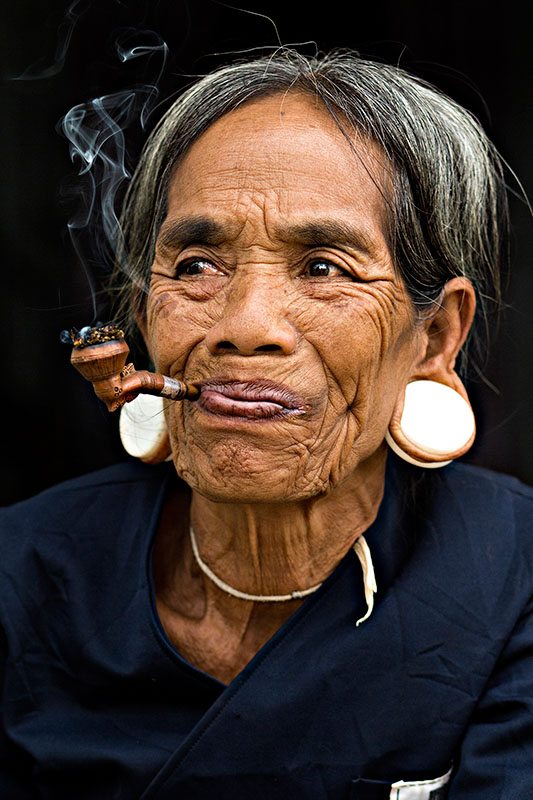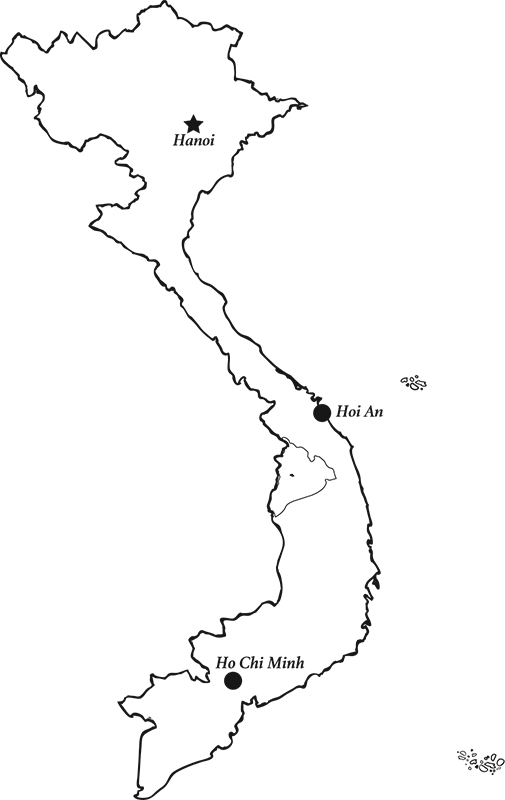In May 2016, I had the opportunity to meet the Brau. The village was one of the poorest I’d seen. There were hardly any men in the village and the youngsters couldn’t share much information about their culture with me. The Brau traditionally wear heavy jewelry that strains their ears to create long, large, hanging earlobes. They use ivory or wood depending on their level of income. According to Brau custom, youngsters who reach the age of puberty have the four front teeth of their upper jaw evenly filed. This is considered a coming of age ritual. The Brau also used to have their bodies tattooed. I was told that all the people who had their faces tattooed had passed away. No one in the village makes the costume anymore. I left this village feeling quite sad but also inspired to tell their story.
In 2018, I came back to give Y An, 76 years old, a book in which her portrait appears. Surprised and happy, she shared this moment with her family and gave me a beautiful traditional hat she had made. In 2020, I tried to visit with her again but sadly she had fallen ill. The village had killed a buffalo to try to heal her and no one was allowed to enter her house for two days. Unfortunately, on both of these trips I was able to see that culturally the situation had gotten worse, which does not bode well for the Brau. The Brau have also reportedly crossed the borders into Laos and Cambodia, so my next step will be to seek them out there to see if I can get more information.

